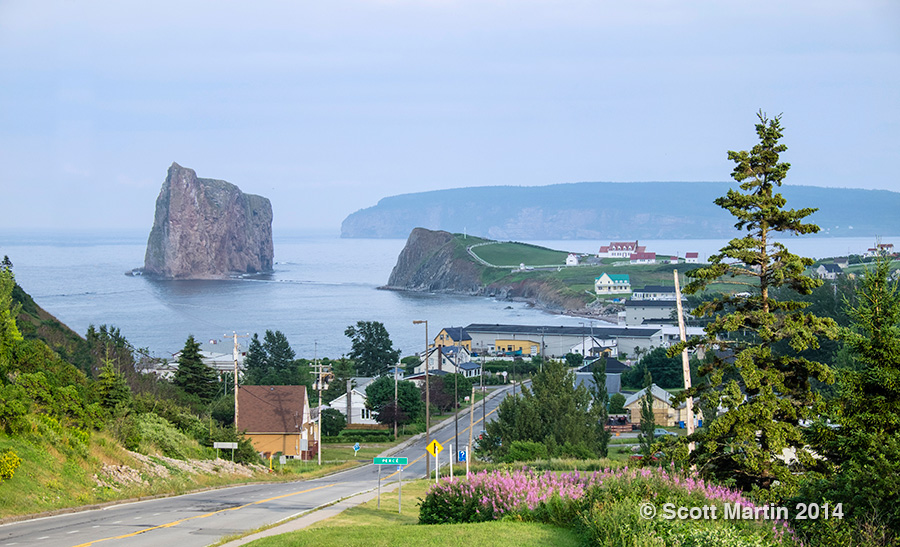
by Scott Martin Photography | Aug 26, 2014 | Blog, Educational, Landscapes, Naturescapes, Travel
As you wind your way around the eastern perimeter of the Gaspé Peninsula in Quebec along Highway 132 you will enter the beautiful little community of Percé, famous for Percé Rock and Bonaventure Island which is home to the second largest Northern Gannet population in the world. The entrance to Percé from the north provides a beautiful vista that is typical of the Gaspé Peninsula. Percé Rock is on the left and Bonaventure Island is in the back ground.

The village of Percé was first settled in the mid nineteenth century and was named after its famous rock which was originally named in 1603 by Samuel de Champlain who called it Pierced Island because of the then two large holes that pierced the rock. Percé is home to about 3,000 people although that number swells in the summer with the influx of tourists.
Percé Rock is made of limestone and measures 1,500′ long, 300′ wide and 300′ high at the highest point. It sits about half a mile from shore and a narrow sand stone bar between the rock and the shore allows one to walk across to the rock during low tide. If fact, when the tide is low it is possible to walk all the way to the fifty foot high hole in the rock. Due to the large amounts of rocks that fall from the rock people are discouraged from walking to the rock, however it is quite a thrill to do so.
Percé Rock is very photogenic and the many different vantage points allow for many great views. Its difficult to get unique images of the rock, however always fun to try. This first image is a simple profile of the rock showing its relation to the town. Originally there were two holes in the rock however the larger of the two collapsed in June 1845 leaving the obelisk that now stands alone at the end of the rock.
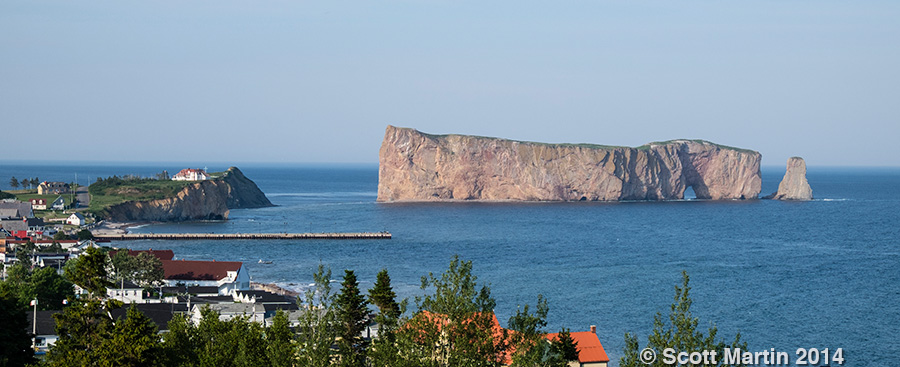
About two miles off shore from Percé is Bonaventure Island, which is a round island of about 1.6 square miles. It is home to the second largest colony of Northern Gannets in the world as well as other pelagic species that nest there in the summer months. It is estimated that there are more than 110,000 Gannets on the Island. You can see Bonaventure Island in this next shot.
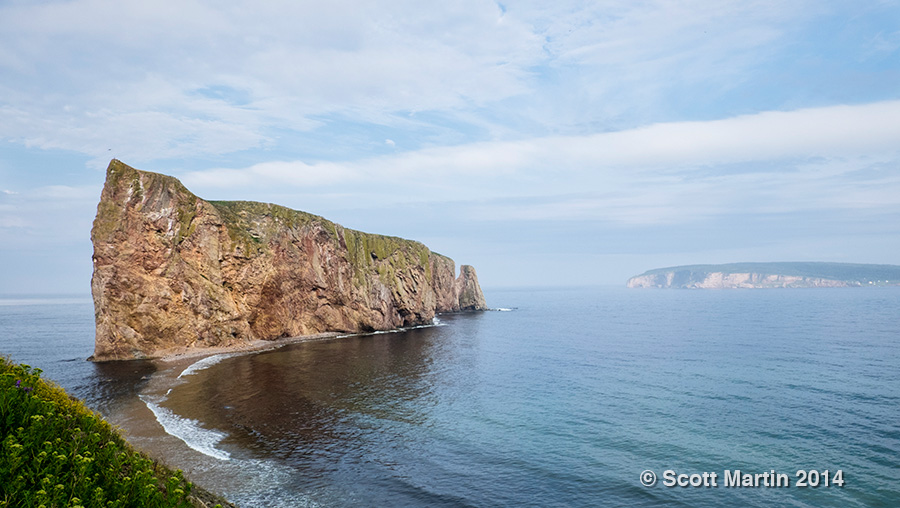
Mount Joli is the distinctively shaped cliff on one end of the sandbar than connects Percé Rock to the mainland (The sandbar is easily seen in the above image). Mount Joli provides a perfect belvedere for photographing Percé Rock….so much so that you now have to pay $2.00 to take the path to a small wooden platform from where you can get that iconic view of the rock. The previous shot and the next few pictures were taken from Mount Joli.
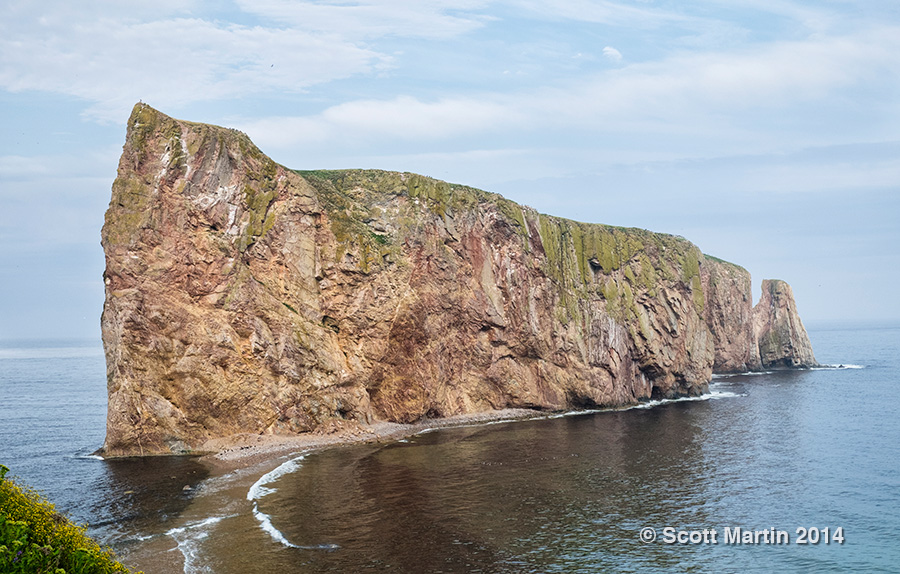
When given the opportunity to include something of interest in the fore ground of an image, it is generally a good idea to do so. The question is to know just how much to include as you don’t want the fore ground inclusion to compete with the object of the image. This next image may have too much however I really like the result and thats the great thing with photography…its a purely subjective art.
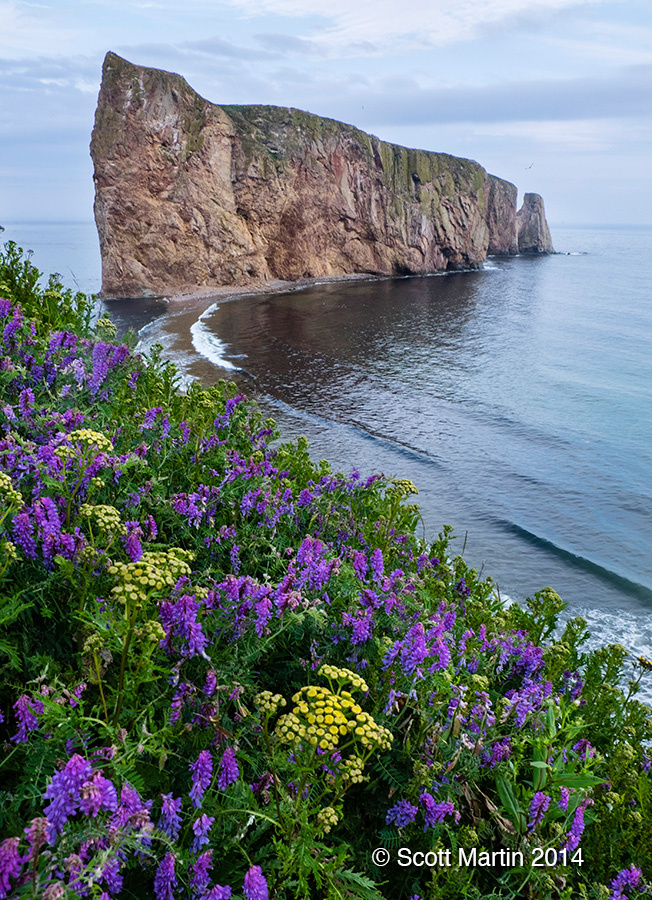
The Gaspé Peninsula has a Roman Catholic religious heritage and churches and crosses are commonplace throughout the region. An old white cross is found on Mount Joli and it was fortunate to have a gull fly by at the perfect time to make an interesting addition to the image.
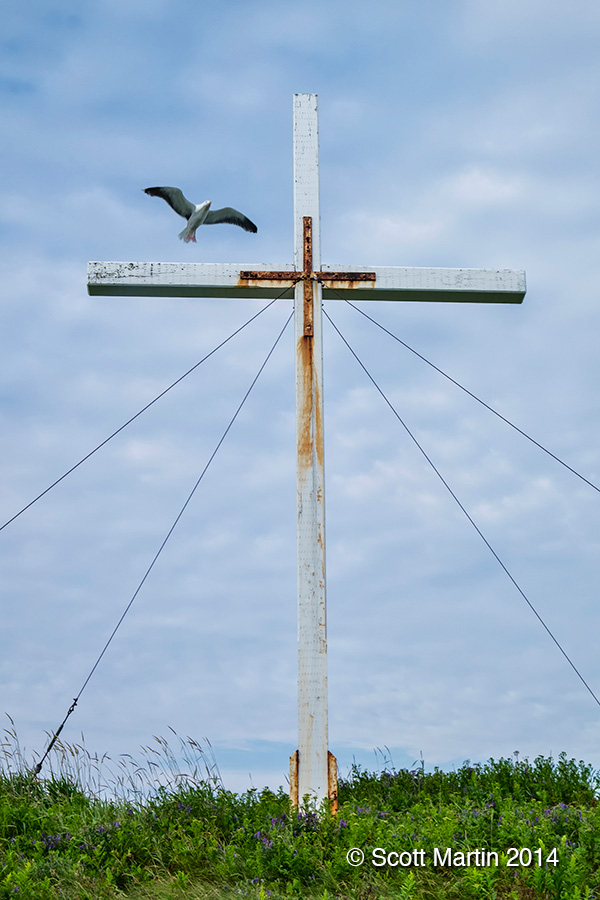
We arrived in Percé late in the afternoon and after checking into our hotel we took the concierge’s recommendation for a good spot to eat. The place he recommended turned out to have completely forgettable food although it did provide a view of the rock that has become one of my favourite images of the trip…always take the camera with you when you go out for diner 🙂
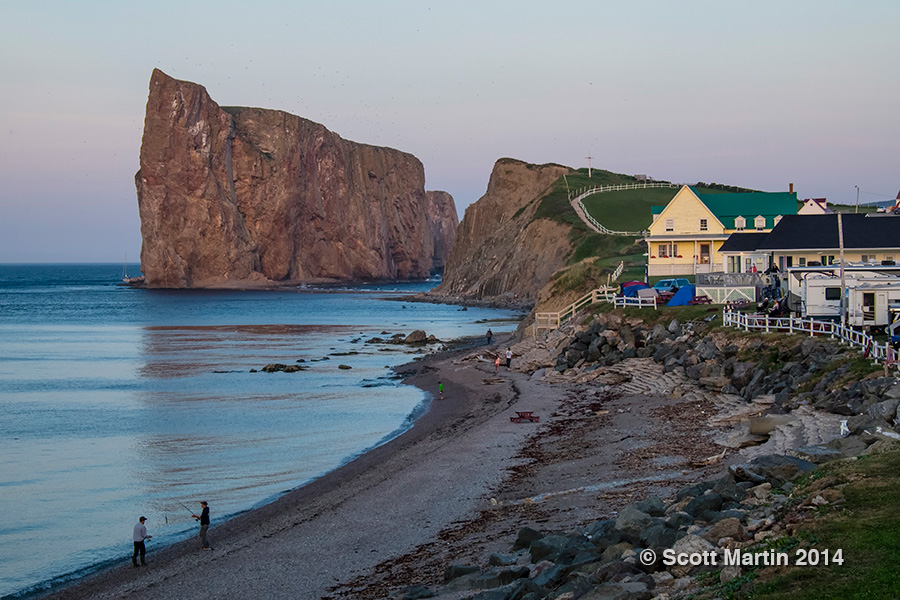
As mentioned, unique shots of iconic objects are difficult to find. Here are a few atypical but probably not unique images of Percé Rock.
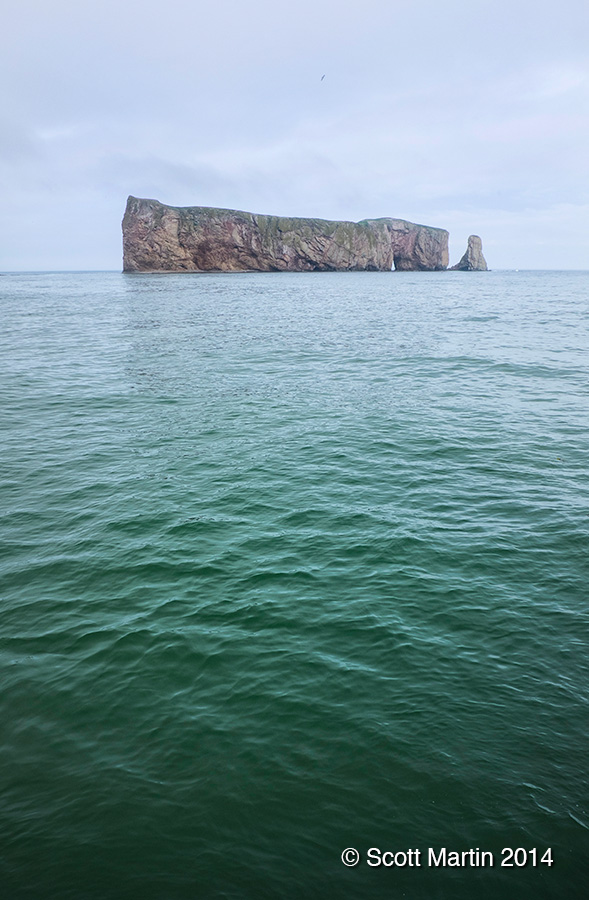
.
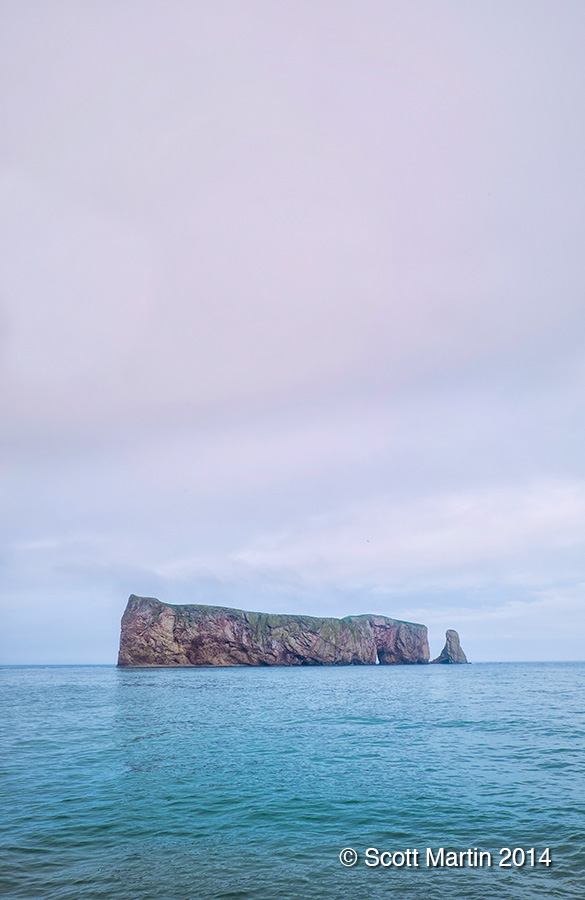
.
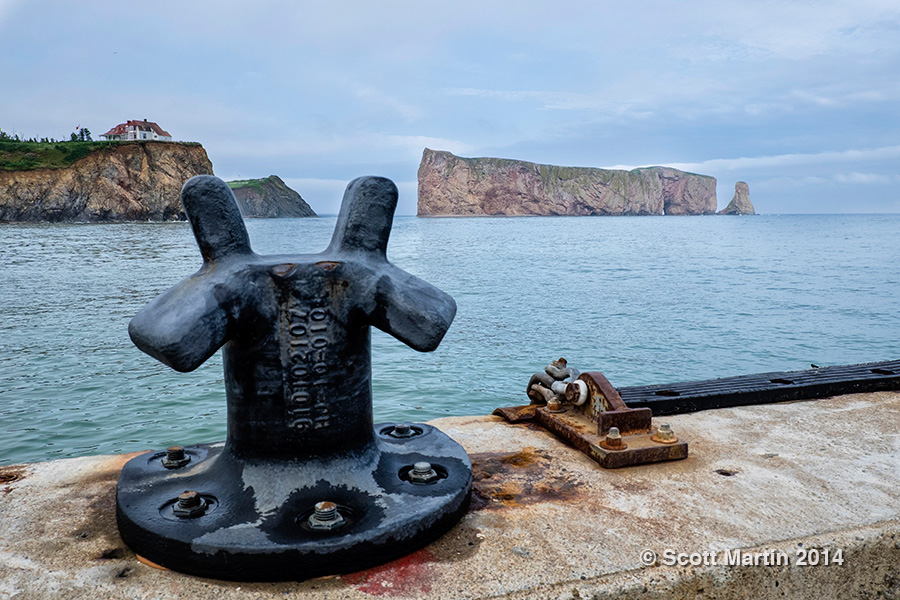
.
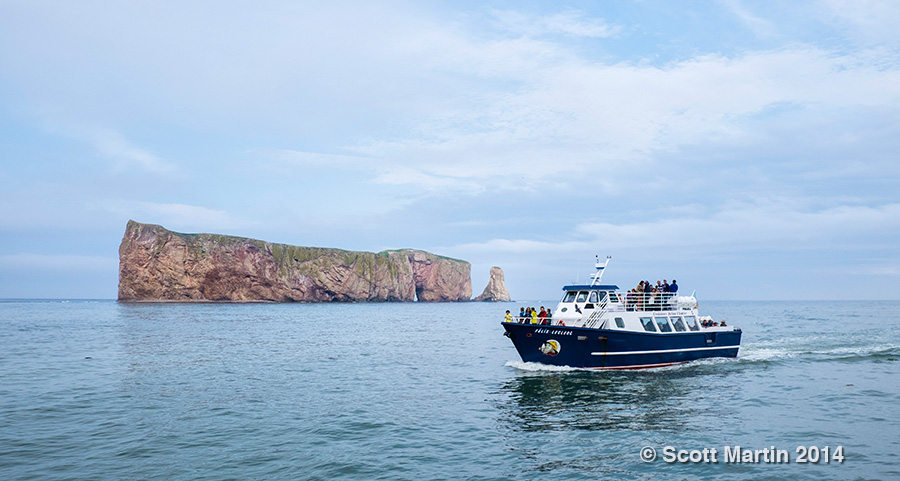
While in Percé we stayed at the Hotel Le Mirage and I would highly recommend that you stay there if you are in the area. Everything was great with our stay at the hotel, especially the view from our second story balcony, from where the next image was taken.

….and the same shot taken a few hours later.
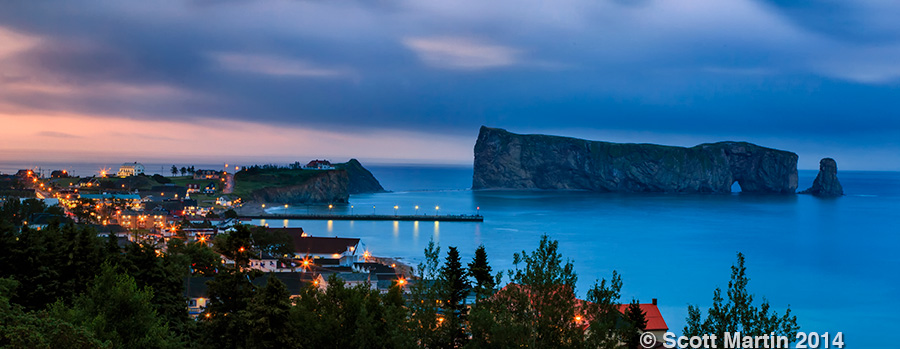
Night photography is a very enjoyable niche that is really quite simple as long as you have a good tripod to keep the camera completely motionless over the long time exposures that are required. It is especially enjoyable when you can practice night photography from the comfort of your hotel room balcony as with these next images. Perhaps because of its location at the tip of a peninsula, the weather conditions are constantly changing around Percé. The winds and clouds are quickly changing and the scenes are rapidly unfolding in front of the camera. The next images were all taken over a period of about an hour.
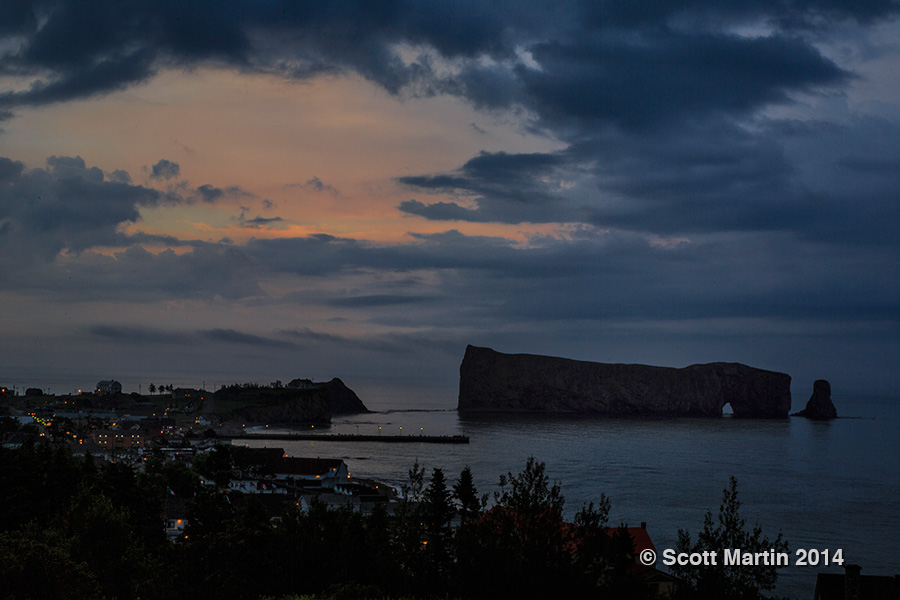
.
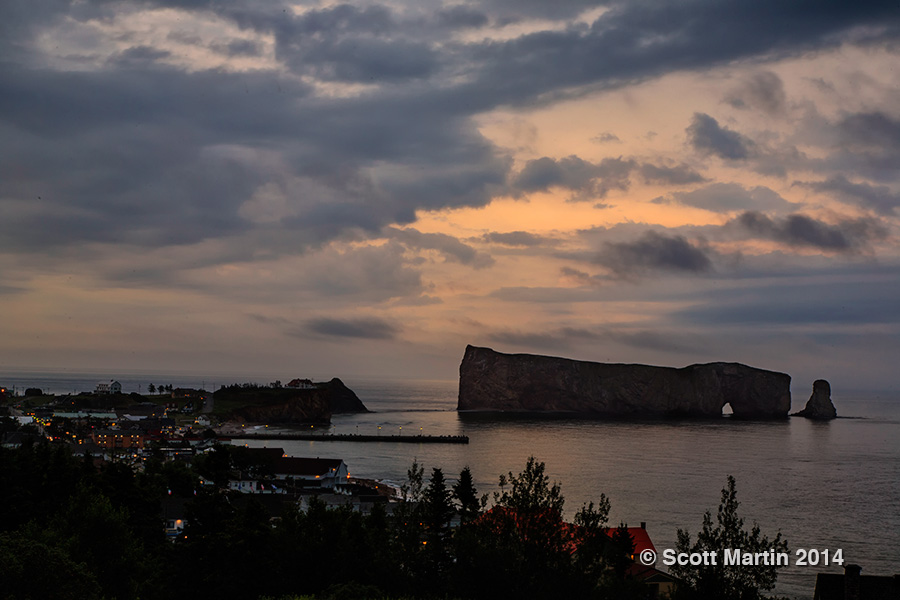
The previous two images are shorter exposures as the cloud detail was very important to the image and therefore any motion in the clouded had to be minimized in order keep the clouds in sharp focus. The next two images have much longer exposures to allow movement in the clouds which blurs them in the image creating a very different feel.
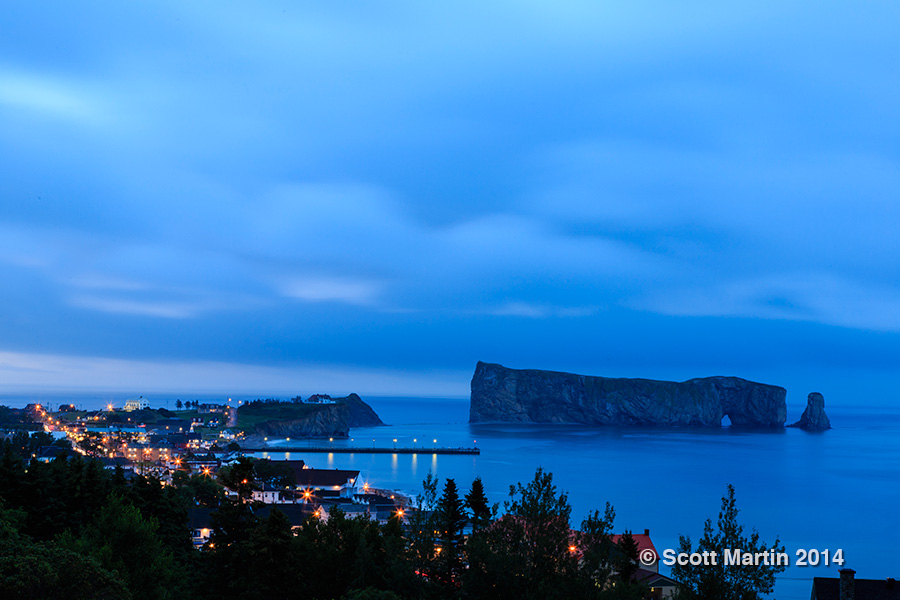
The approaching storm!
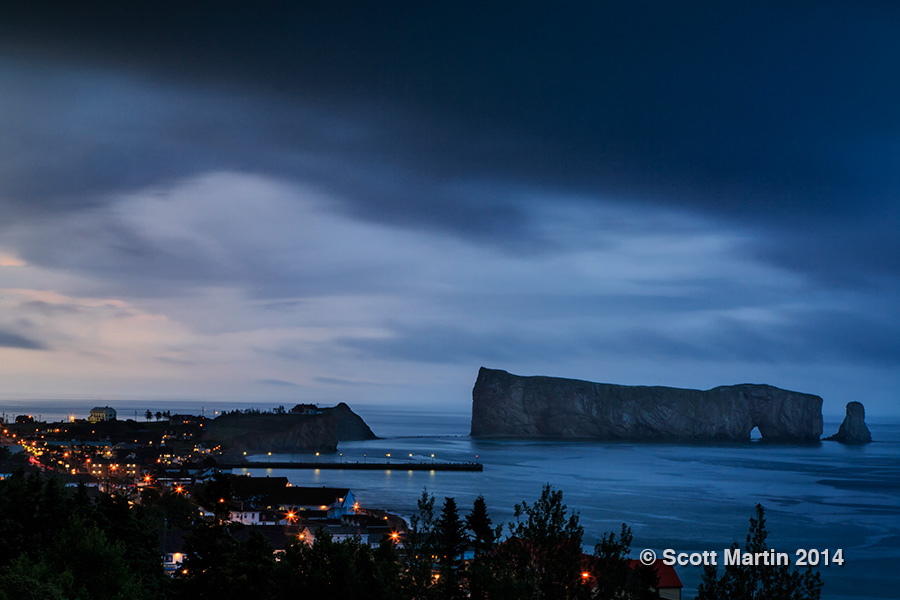
I trust the images in this post have given you a glimpse of what the little village of Percé with its iconic rock is like and I hope that its enough of a glimpse to influence your future travel plans as a personal visit to the area would never disappoint. Its a spectacular and unique corner of our great country that really needs to be seen in person. Even the best photographs can not do the area justice.
With the exception of the night images, which were taken with the Canon 5D and 16-35mm lens, all of the images in this post were taken with the Fuji X-E2 and 18-55mm lens.
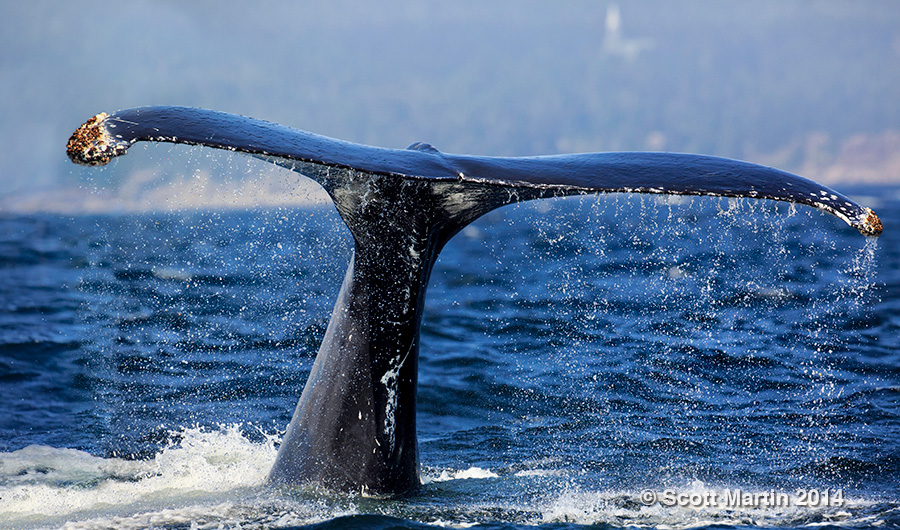
by Scott Martin Photography | Aug 19, 2014 | Blog, Educational, Landscapes, Naturescapes, Travel, Wildlife
We recently returned from an almost 4,000 km drive around the Gaspe Peninsula of Quebec. It was a wonderful trip for many reasons, including that my parents joined us and we were able to visit my Dad’s parents homestead in the little town of New Richmond on the south side of the peninsula. Prior to my grandparents moving to Oshawa in the 1920’s, there were five generations of Martin’s in the Black Cape/New Richmond area of the Gaspe Peninsula.
Undoubtably, one of the high points of the vacation was seeing Minke and Humpback Whales while whale watching out in the rough waters of Gaspe Bay and the Gulf of St. Lawrence. Our boat, the Narval III was operated by Croisieres Baie de Gaspe leaving from Grande-Grave harbour within Forillon National Park, Quebec’s first National park, located at the Eastern tip of the Gaspe Peninsula.
As you can see the Narval III is a beautiful boat for whale watching.
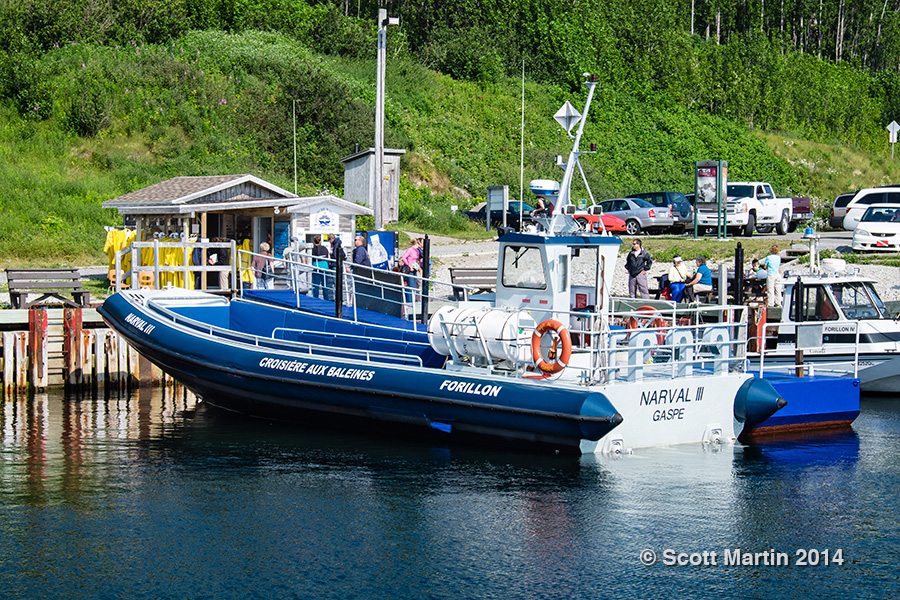
Narval III
This next shot with the smaller red zodiac on the left gives some perspective as to the size of the Narval III.
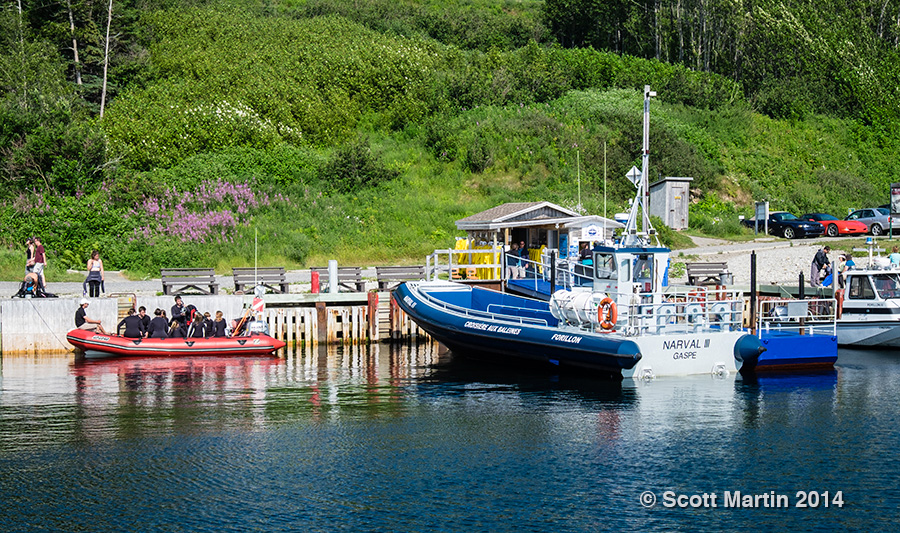
Narval III
We had reserved our spots on the boat a number of weeks before arriving, however because of the rough seas and high winds, we were forewarned that it would be a rough almost three hours on the boat and that we would get completely soaked. Deb & my mom were wise in their decision to stay on shore, but my Dad and I donned the complementary rain gear and climbed aboard. Not knowing anything about whale observation and given the rough seas, I was pretty much convinced we wouldn’t see any whales, however only a few minutes into the voyage we saw some Minke whales, which are the second smallest of the baleen whales (more on baleen whales in a minute). The average length of a Minke whale is 23 feet. It was such a thrill to see even a ‘small’ whale that the trip was already a success, but only a short while later we found a pair of Humpback Whales and I was amazed at how close they would come to the boat as we watched and followed them for the next hour or so.
Here is one of the first pictures I was able to capture of the Humpback Whale.

It is difficult, if not impossible, to describe effectively enough to provide someone else an appreciation for the sheer size of these whales. Humpbacks weigh in at about 40 tons (80,000 pounds) and can reach lengths of 62′, or larger than a transport truck, yet they are very graceful to observe in the water. The normal method of spotting whales is to look for the 10-15′ high water spout created when the whale surfaces to breath and forcibly exhales air through the blowhole before inhaling. This is an easy thing to spot under calm seas, but the high winds and ten foot swells made it much more difficult for us to observe the water spouts. After seeing a spout, the small dorsal fin would appear about twenty feet behind often followed by the fluke or tail, allowing for great photo opportunities. The following are a few of the results.
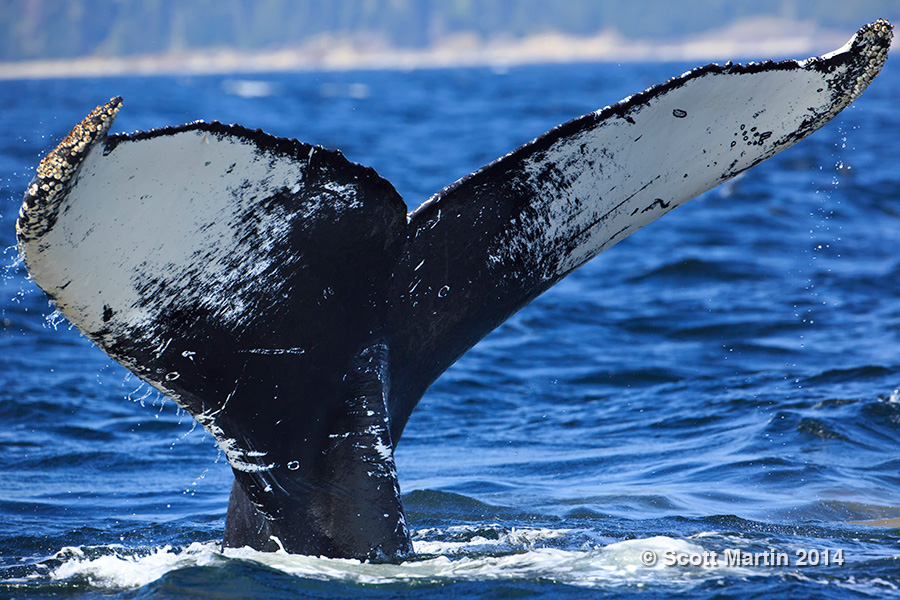
The underside of a Humpback tail has large white areas which are an identification distinction visible from quite far away.
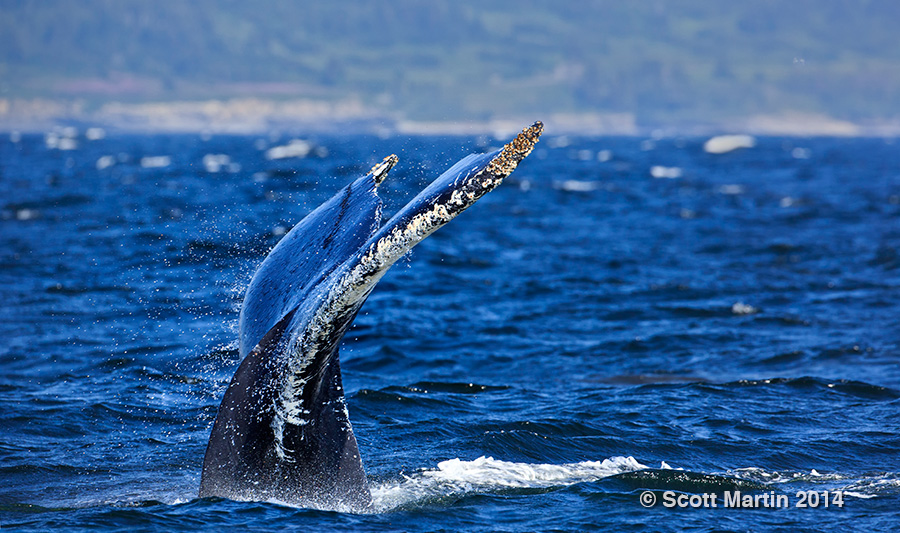
Humpback Whales are part of the baleen whale grouping. Baleen whales are edentulous, meaning they have no teeth, but instead have up to 400 baleen plates on both sides of their mouths. These plates are side by side, perpendicular to the roof of the mouth and can be up to 4′ in length. When the whale closes its mouth while feeding on a school of krill, the small fish are trapped between the baleen plates while the water is expelled. The food is then swallowed. Blue whales, the largest animals on the planet, are also baleen whales, thus the biggest whales in the world have no teeth, which is perhaps one of those little pieces of trivia you will never forget after reading this blog post!
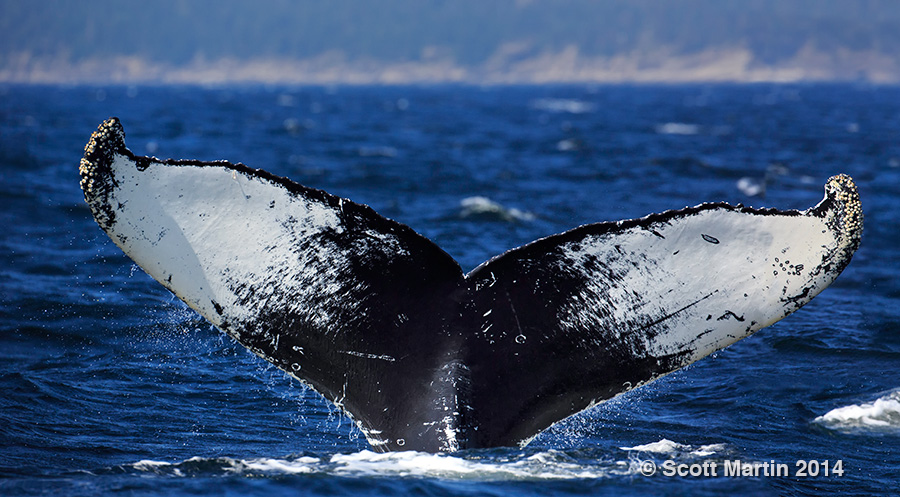
The Humpback Whale, like many whale species, was brought to the brink of extinction around the turn of the last century by over fishing and a hunting ban was implemented in 1966. Since then the population of the Humpback globally has slowly increased, however the National Geographic Association still lists the Humpback as endangered. It is estimated that there are 80,000 Humpbacks alive today.
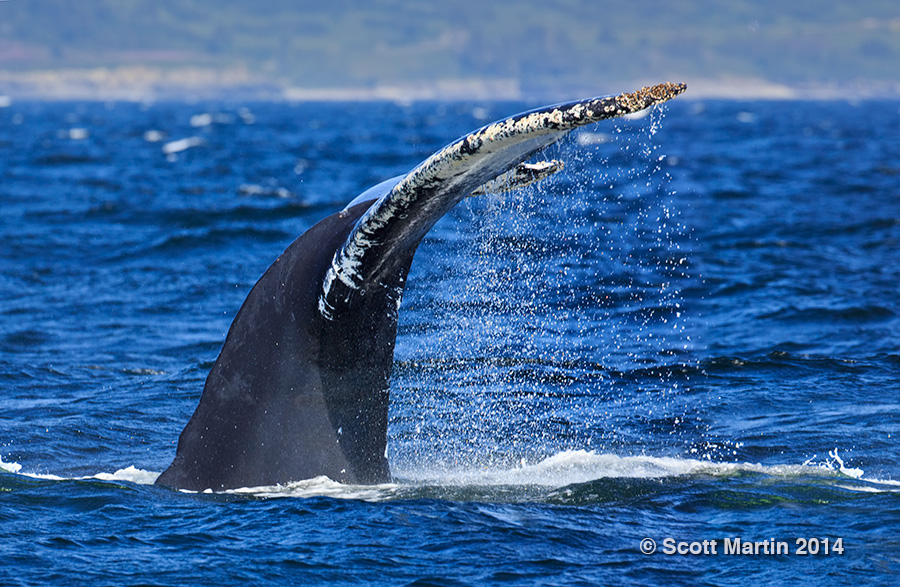
The Humpback Whale gets its name from the distinctive hump seen in its dorsal spine as it arches above the water when it surfaces to breath.
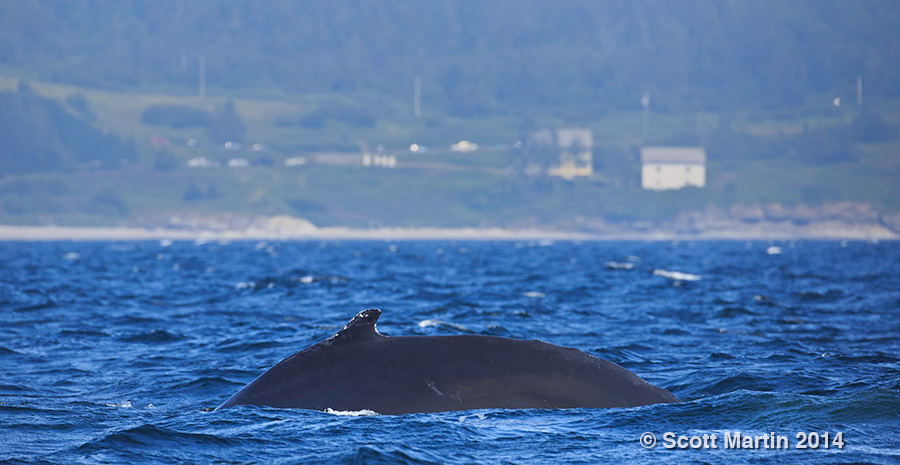
Humpback’s Hump
I was fortunate to capture a unique perspective of the dorsal spine of the Humpback Whale as it surfaced while swimming directly towards the boat. Only a small part of the whale is visible, but you can see how the humpback got its name.
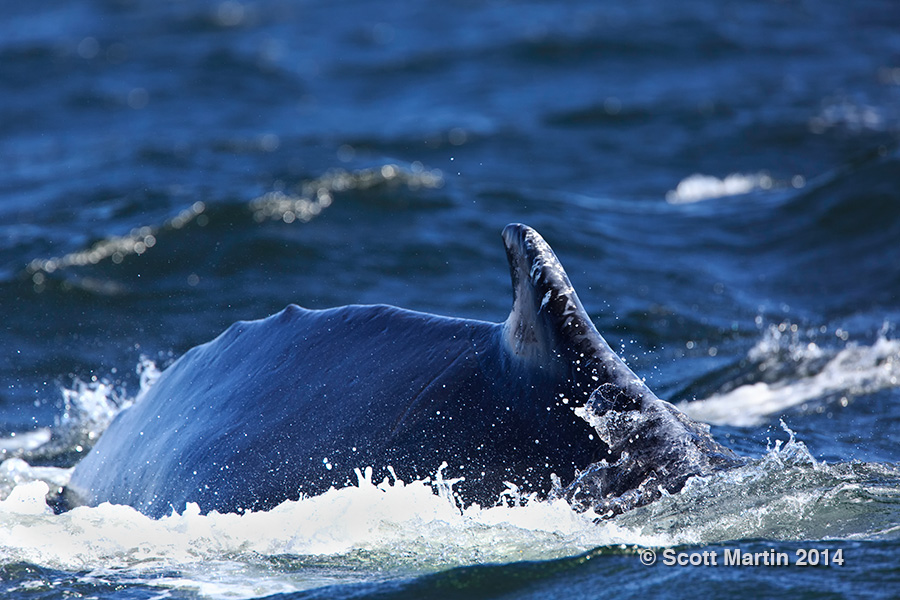
Humpback Whales are migratory animals that cover a lot of miles every year, in fact 16,000 miles on average. They summer in the cooler northern polar waters and head south in the winter to the tropical waters where they breed and give birth to their young. Interestingly they don’t eat while in the cooler waters in the summer and live of the fat reserves created by all the krill and small fish they consume in the winter months. Although they don’t eat in the summer, they continue to produce waste as this next image shows 🙂
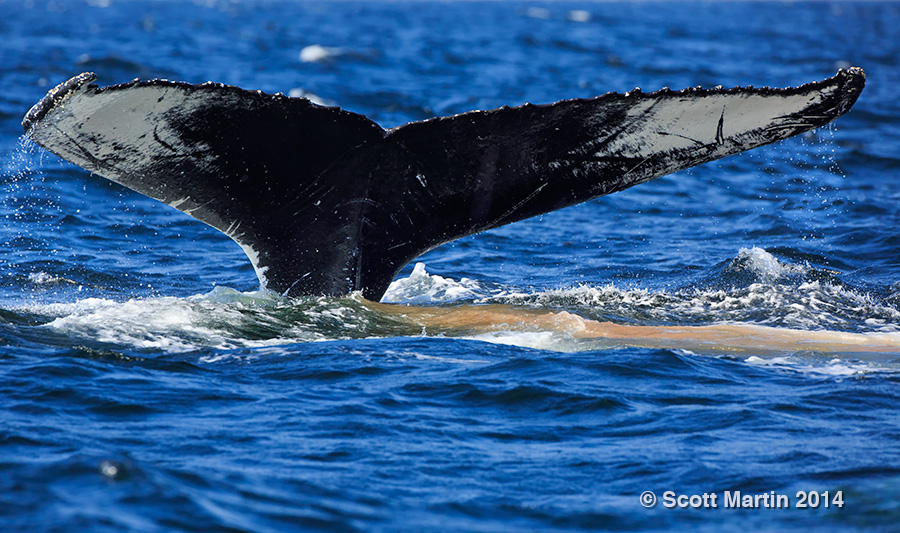
You won’t find this next pic in the gallery, but it is included here in an attempt to convey the relative size of an adult Humpback whale, using the rough waters of Gaspe Bay and the shoreline in the back ground to provide some scale. The width of the Humpback fluke can be up to one third of its length meaning the tail width can reach 15-20 feet or the length of most recreational motor boats.
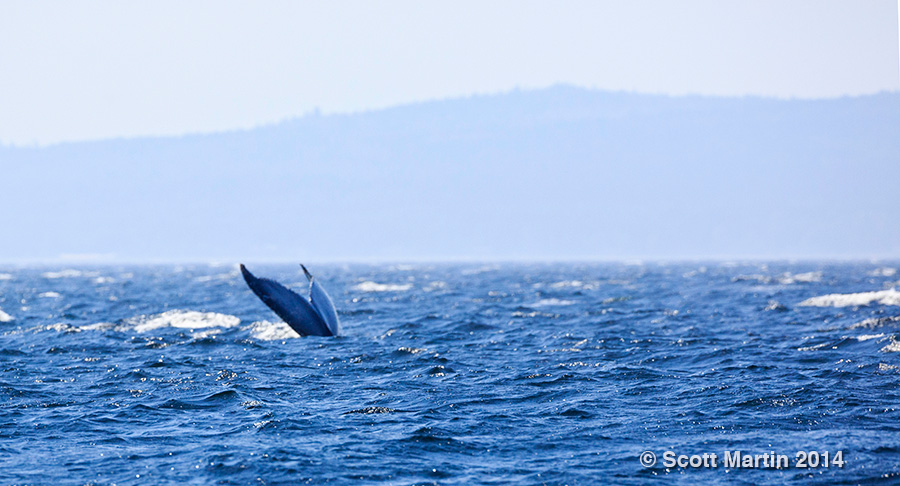
Humpback Fluke
I trust that you have enjoyed these Humpback Whale images and if you’ve never been whale watching, I would urge you to plan a trip to Forillon National Park and sign up for an excursion with Croisieres Baie de Gaspe. You will be amazed when you see up close one of the largest animals that God designed to roam our oceans.
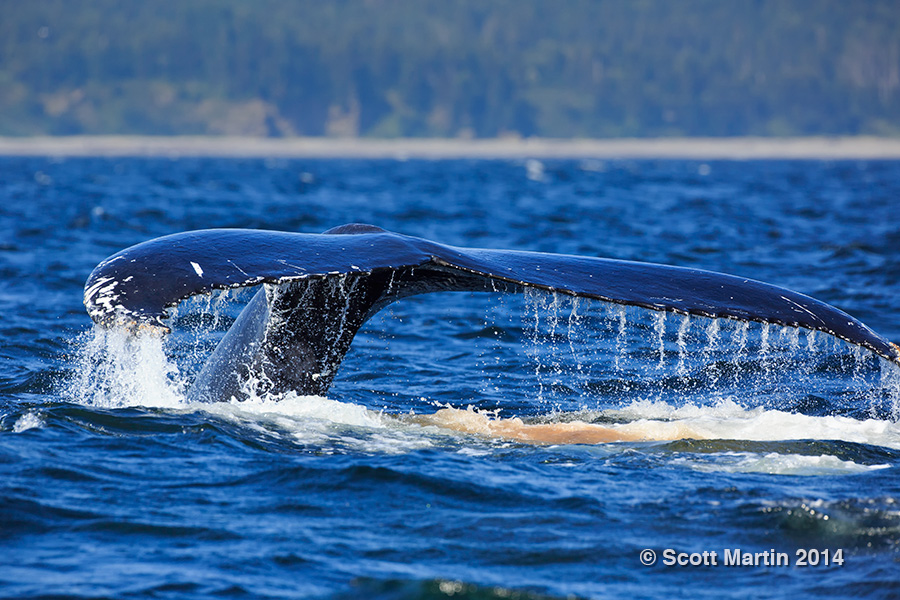
To see the above images in more detail, you can view them in the Wildlife Gallery.
As mentioned in the opening of this blog post, our whale watching excursion left from Grande-Grave Harbour in Forillon National Park. You could easily spend a few days exploring the park itself and admiring its many beautiful vistas overlooking the Gulf of St. Lawrence and Gaspe Bay. One of the most picturesque is Cape Bon Ami in the northern section of the park. The cliffs around the Cape provide nesting grounds for Black-legged Kittiwakes, Razor-billed Auks, Common Murre and Black Guillemots, which will be described in a future post. In the mean time here are some pictures of Cape Bon Ami and the surrounding area.
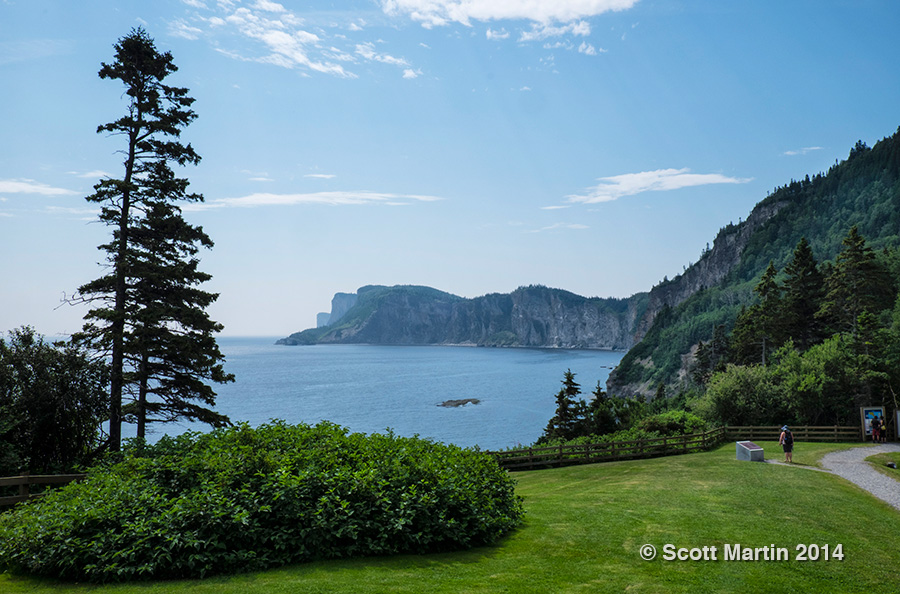
.
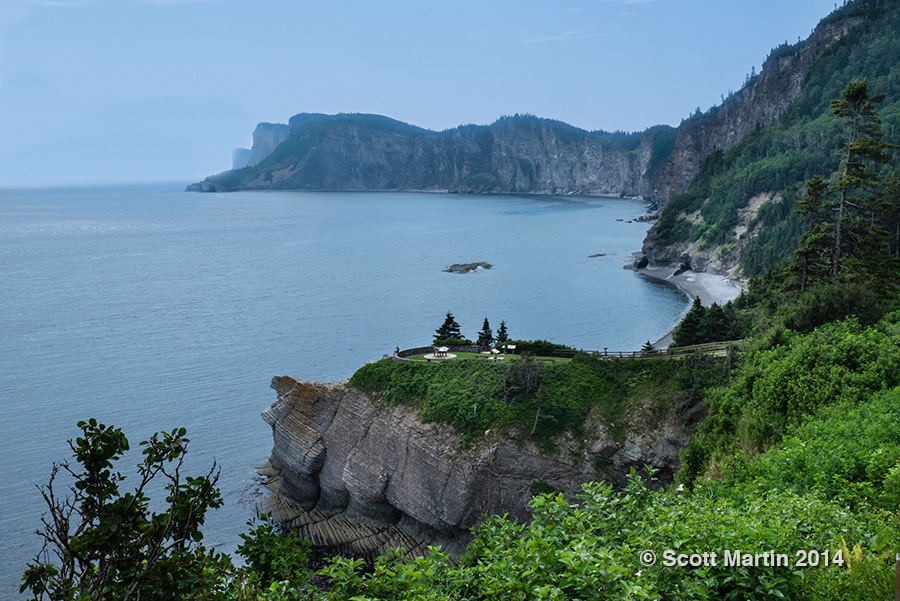
.
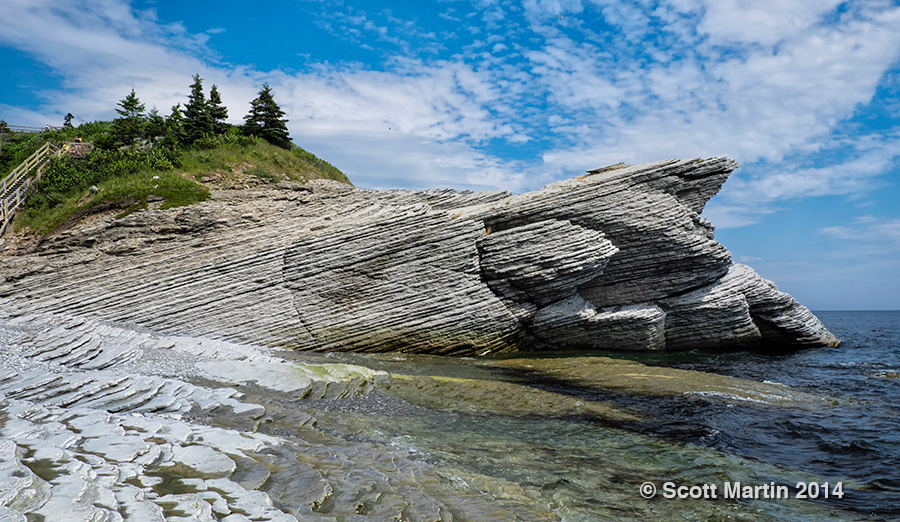
.
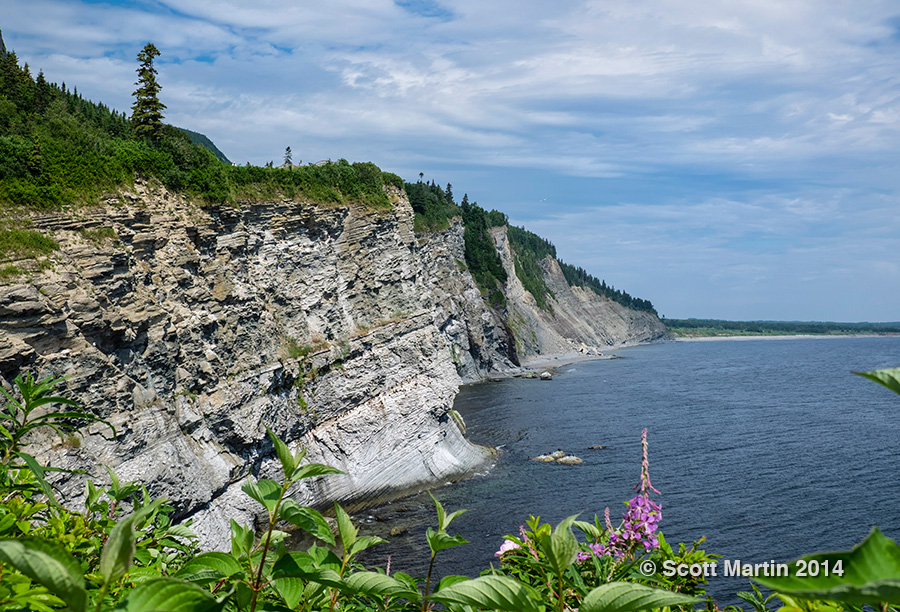
A number of other images from Forillon can be found in the Naturescapes Gallery.
The whale images in this post were all taken with a Canon 5D Mk III and 500 f/4 L lens while all other images were taken with a Fujifilm X-E2 and 18-55 zoom lens. Long time readers of this blog will recognize that this is a significant departure from a gear perspective, however I will talk about the new Fuji equipment in more detail in a future post.
One final note; if you would like to receive future blog posts via email, please enter your email address in the “Subscribe to Blog Via Email” box at the top of the right sidebar. By doing so, you will receive future blog posts via email as soon as they are published. Your email addresses will never be shared and your email subscription is easily managed.




































Follow Scott Martin Photography